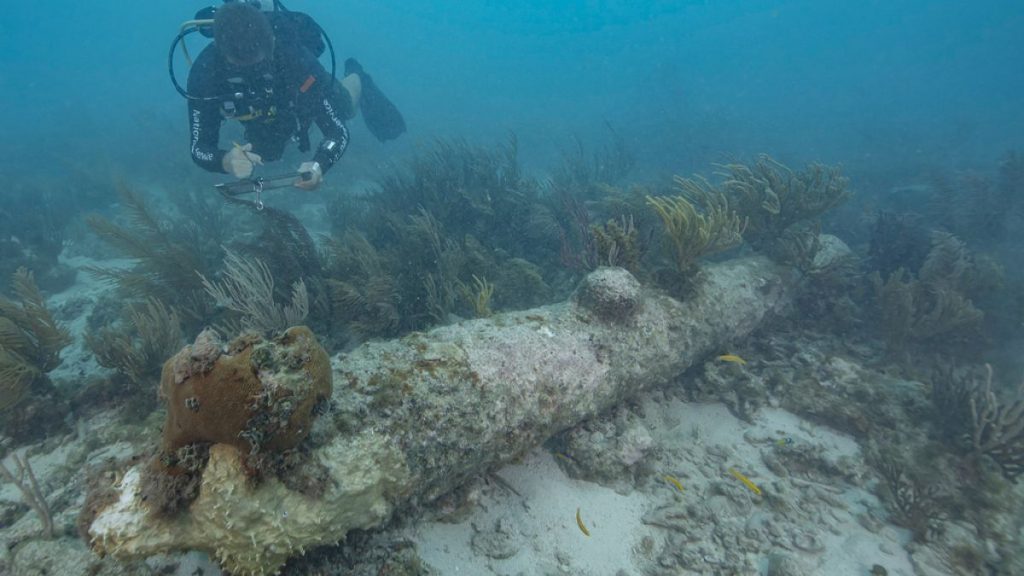Portugal’s coastal waters, encompassing the mainland, Azores, and Madeira archipelagos, hold a vast, largely untapped, reservoir of maritime history. Underwater archaeologist Alexandre Monteiro, a researcher at Nova University in Lisbon, has meticulously compiled a database of shipwrecks in these waters, documenting a staggering 8,620 vessels lost to the depths over the centuries. This extensive catalog spans back to the 16th century, the earliest period for which reliable historical records are available, providing a compelling glimpse into Portugal’s rich maritime past and the perils faced by seafarers navigating these often treacherous waters. Monteiro’s research not only highlights the sheer volume of shipwrecks but also points to the potential for significant archaeological and historical discoveries waiting to be unearthed.
Of the thousands of shipwrecks identified, Monteiro estimates that approximately 250 hold valuable treasures within Portugal’s territorial waters. These vessels, lost during various periods of Portugal’s maritime history, represent a tangible connection to the past and offer the possibility of recovering artifacts that could shed light on trade routes, shipbuilding techniques, and the lives of those who sailed the seas. One such example is the Nossa Senhora do Rosário, a Spanish ship that met its fate off the coast of Troia in 1589. Monteiro’s detailed research on this particular wreck, including knowledge of its manifest indicating a cargo of 22 tonnes of gold and silver, underscores the potential value of these underwater sites and the potential for recovering historically significant artifacts. The stories these wrecks can tell offer a unique perspective on the challenges and triumphs of maritime exploration and commerce.
While the exact locations and contents of all 250 treasure-laden wrecks remain shrouded in some degree of mystery, Monteiro’s research provides a crucial starting point for future exploration and recovery efforts. The database serves as a roadmap, guiding researchers and archaeologists to potential sites of historical significance. These underwater time capsules offer a unique window into the past, potentially revealing details about the lives of sailors, the technologies they employed, and the goods they transported. The submerged artifacts, preserved by the ocean’s depths, hold the promise of enriching our understanding of Portugal’s maritime history and its role in global trade and exploration.
Despite the potential historical and cultural significance of these underwater treasures, Monteiro expresses concern over the lack of government intervention in protecting these sites. While his findings have been published and made available to authorities, he notes a distinct absence of a comprehensive plan to safeguard these potentially invaluable historical resources. This lack of proactive measures leaves the wrecks vulnerable to accidental discovery and potential damage during coastal development projects or other maritime activities. Monteiro emphasizes the urgent need for a contingency plan to ensure the proper preservation and study of any artifacts unearthed during such chance encounters.
The absence of a protective framework highlights a potential disconnect between the recognition of the historical value of these sites and the concrete actions taken to safeguard them. This inaction raises concerns about the potential loss or damage of irreplaceable artifacts should a shipwreck be inadvertently disturbed. The development of a comprehensive strategy for managing these underwater cultural heritage sites is crucial to prevent the unintended destruction of valuable historical information and to ensure that future generations can benefit from the knowledge they hold.
Adding another layer to the discussion, Monteiro downplays the threat posed by treasure hunters. He attributes this low risk primarily to the fact that many of the wrecks are buried beneath layers of sand, making them difficult to locate and access without specialized equipment and knowledge. This natural barrier, while offering some protection, does not negate the need for official oversight and protective measures. The potential for discovery remains, and with it, the need for a well-defined plan to ensure responsible recovery and preservation of any artifacts. The absence of such a plan leaves the door open to potential exploitation and loss of invaluable historical data.

